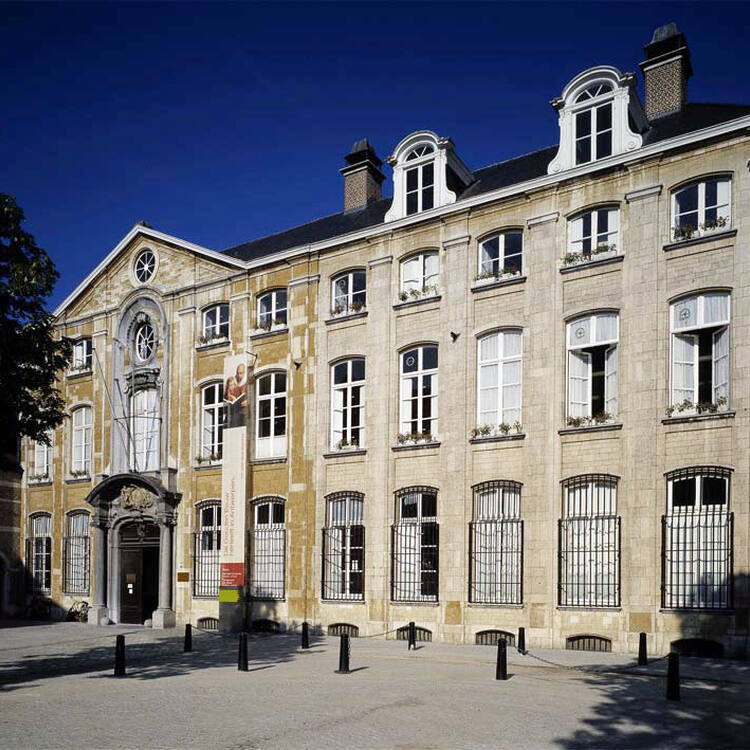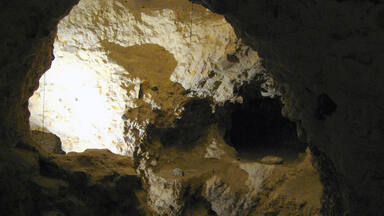Plantin-Moretus House-Workshops-Museum Complex
Plantin-Moretus House-Workshops-Museum Complex
The Plantin-Moretus Museum is a printing plant and publishing house dating from the Renaissance and Baroque periods. Situated in Antwerp, one of the three leading cities of early European printing along with Paris and Venice, it is associated with the history of the invention and spread of typography. Its name refers to the greatest printer-publisher of the second half of the 16th century: Christophe Plantin (c. 1520–89). The monument is of outstanding architectural value. It contains exhaustive evidence of the life and work of what was the most prolific printing and publishing house in Europe in the late 16th century. The building of the company, which remained in activity until 1867, contains a large collection of old printing equipment, an extensive library, invaluable archives and works of art, among them a painting by Rubens.
Description is available under license CC-BY-SA IGO 3.0
Complexe Maison-Ateliers-Musée Plantin-Moretus
Le musée Plantin-Moretus est une imprimerie et maison d’édition datant de la Renaissance et de l’époque baroque. Situé à Anvers – avec Paris et Venise, l’une des trois villes les plus importantes pour les débuts de l’imprimerie en Europe –, il est étroitement lié à l'histoire de l’invention et de la diffusion de la typographie. Son nom rend hommage au plus grand imprimeur-éditeur de la seconde moitié du XVIe siècle : Christophe Plantin (vers 1520-1589). Outre sa valeur architecturale exceptionnelle, le monument contient une importante collection d’objets témoignant de la vie et du travail dans l’imprimerie et maison d’édition la plus prolifique d’Europe à la fin du XVIe siècle. L’entreprise est restée en activité jusqu’en 1867 et son bâtiment renferme une vaste collection d’anciens équipements d’imprimerie, une grande bibliothèque, de précieuses archives et des œuvres d’art, notamment un tableau de Rubens.
Description is available under license CC-BY-SA IGO 3.0
مجموعة دار نشر-محترف-متحف بلانتان موريتوس
يتألف متحف بلانتان موريتوس من مطبعة ودار نشر يرقى تاريخهما إلى عصر النهضة والحقبة الباروكية. يقع المتحف في مدينة أنفرس التي تشكّل، إلى جانب باريس والبندقية، إحدى أهم المدن الثلاث التي شهدت بدايات الطباعة في أوروبا. ويرتبط هذا المتحف إرتباطاً وثيقاً بتاريخ إختراع الطباعة ونشرها. وسمّي هذا المتحف تيمناً بكريستوف بلانتان (حوالى 1520-1589) وهو أكبر مطبعي وناشر في النصف الثاني من القرن السادس عشر. وبالإضافة إلى قيمته الهندسية الإستثنائية، يحوي النصب مجموعة هامة من القطع ذات الدلالة حول الحياة والعمل في المطبعة ودار النشر اللتين كانتا تتميّزان بزارة الإنتاج الذي لم تكن تضاهيه أي دار أخرى في أوروبا في أواخر القرن السادس عشر. وبقيت المؤسسة نشطة حتى العام 1867 ويشمل المبنى الذي يأويها مجموعة واسعة من معدات الطباعة القديمة، ومكتبة كبيرة، ومحفوظات قيّمة ومصنّفات فنية، لا سيما لوحة للفنان روبنز.
source: UNESCO/CPE
Description is available under license CC-BY-SA IGO 3.0
帕拉丁莫瑞图斯工场-博物馆建筑群
帕拉丁莫瑞图斯博物馆建于文艺复兴和巴洛克时期,是一家印刷出版工场,位于安特卫普市,与巴黎和威尼斯并为欧洲早期印刷的三大领袖城市,与凸版印刷的发明和传播史息息相关。博物馆以16世纪下半叶(公元1520至1589年)最伟大的印刷商、出版商克里斯托弗·帕拉丁(Christophe Plantin)的名字命名。这一古迹具有杰出的建筑艺术价值,囊括了16世纪晚期欧洲最鼎盛印刷出版社工作和生活的所有证据。这个公司一直运营到1867年,公司大楼目前还保存有大量旧印刷设备、一个藏书颇丰的图书馆以及大量的珍贵档案和艺术品,其中还有一幅鲁本斯(Rubens)的画。
source: UNESCO/CPE
Description is available under license CC-BY-SA IGO 3.0
Музейный комплекс издательства и типографии Плантен-Моретюс (Антверпен)
Музей Плантен-Моретюс – это типография и издательский дом, возникновение которых относится к временам Возрождения и барокко. Находящийся в Антверпене – одном из трех городов (наряду с Парижем и Венецией), являвшихся лидерами в раннем европейском книгопечатании, этот музей тесно ассоциируется с историей зарождения и распространения типографского дела. Его название происходит от имени величайшего типографа и издателя второй половины ХVI в. – Кристофа Плантена (ок. 1520-1589 гг.). Памятник имеет выдающуюся архитектурную ценность. Он ярко иллюстрирует успешную работу типографии и издательского дома Европы конца ХVI в. В здании этого предприятия, которое продолжало свою деятельность до 1867 г., содержится большая коллекция старинного печатного оборудования, богатая библиотека, неоценимый архив и собрание произведений искусства, включающее картины Рубенса.
source: UNESCO/CPE
Description is available under license CC-BY-SA IGO 3.0
Casa, talleres y museo Plantin-Moretus
Una imprenta y una casa editorial del Renacimiento y la época del Barroco forman el museo Plantin-Moretus. Situado en Amberes –que formó con Venecia y París la tríada de ciudades europeas donde la imprenta cobró mí¡s auge en sus primeros tiempos–, el museo estí¡ estrechamente vinculado a la historia de la invención y propagación del arte tipogrí¡fico. Su nombre rinde homenaje al impresor y editor mí¡s importante de la segunda mitad del siglo XVI (circa 1520-1589). Ademí¡s de su valor arquitectónico excepcional, el edificio del museo contiene numerosos testimonios de la vida y los trabajos de la imprenta y casa editorial mí¡s prolífica de toda Europa en las postrimerías del siglo XVI. La casa editorial prosiguió sus actividades hasta 1867 y en su edificio se conserva una importante colección de material antiguo de imprenta de notable valor, así como una gran biblioteca, archivos muy valiosos y algunas obras de arte, entre las que figura un lienzo pintado por Rubens.
source: UNESCO/CPE
Description is available under license CC-BY-SA IGO 3.0
プランタン‐モレトゥスの家屋‐工房‐博物館複合体
16世紀の大印刷業者クリストフ・プランタンの名にちなむプランタン-モレトゥス博物館は、元はルネサンスとバロック時代に遡る印刷工場・出版所。パリやヴェネツィアと並び、ヨーロッパの初期印刷術を先導したアントワープにあり、活版印刷の発明と普及に大きく寄与した。建物自体に重要な建築学的価値があるだけでなく、16世紀ヨーロッパで最も多産な印刷所だった頃の活気や業績が、今も十分に読み取れる。印刷所は1867年まで機能していたが、現在では旧式の印刷機や大図書館、貴重な文書や芸術作品が保存されている。source: NFUAJ
Plantin-Moretus museum
Het Plantin-Moretus museum is een drukkerij en uitgeverij uit de renaissance en de barok. Het gebouwencomplex ligt in Antwerpen, in de 16e eeuw een metropool en de belangrijkste stad in de ontwikkeling van de Europese typografie. De naam verwijst naar de grootste drukker-uitgever van de tweede helft van de 16e eeuw: Christophe Plantin (circa 1520-1589). Het gebouw – dat in bedrijf bleef tot 1867 – bevat een grote collectie oude drukapparatuur, een uitgebreide bibliotheek, en archieven en kunstwerken die van onschatbare waarde zijn, waaronder een schilderij van Rubens.
Source: unesco.nl
Outstanding Universal Value
Brief synthesis
The Plantin-Moretus House-Workshops-Museum Complex is the only surviving printing workshop and publishing house in the world dating back to the Renaissance and Baroque periods. Situated in Antwerp, one of the three leading cities of early European printing along with Paris and Venice, it is associated with the history of the invention and dissemination of typography. Its name refers to the greatest printer-publisher of the second half of the 16th century, Christophe Plantin (c. 1520-1589), and his son-in-law, Jan Moretus I (1543-1610), who took over the best-equipped printing company in Europe upon Plantin’s death. It was thanks to the Moretus family that the firm’s production activities continued in the same location for three centuries, from 1576 to 1867. Ten years later, the Complex was opened as a museum dedicated to presenting the relationship between the living environment of the family, the world of work, and the world of commerce during the 16th, 17th, and 18th centuries.
The Complex evolved over the centuries to include a patrician mansion as well as north, south, west, and east wings, added to the 1576-1580 core in three phases (1578-1584, 1620-1640, and 1760-1763), creating an interior courtyard. In addition to its outstanding architectural value, the Complex contains exhaustive evidence of the life and work of what was the most prolific printing and publishing house in Europe in the late 16th century. Within its walls are the equipment of the workshops (printing-press, foundry, typesetting room), the furnishings that have remained in situ (equipment, tools, an extensive library, furniture, portraits), the invaluable business archives of the Officina Plantiniana (inscribed in UNESCO’s Memory of the World Register of documentary heritage in 2001), and works of art, including paintings from the workshop of Rubens.
Criterion (ii): Through the publications of the Officina Plantiniana, the Plantin-Moretus Complex is a testimony to the major role played by this important centre of 16th-century European humanism in the development of science and culture.
Criterion (iii): Considered as an integral part of the Memory of the World (UNESCO, 2001), the Plantinian Archives, including the business archives of the Officina, the books of commercial accounts and the correspondence with a number of world-renowned scholars and humanists, provide an outstanding testimony to a cultural tradition of the first importance.
Criterion (iv): As an outstanding example of the relationship between the living environment of a family during the 16th, 17th and 18th centuries, the world of work and the world of commerce, the Plantin-Moretus Complex is of unrivalled documentary value relating to significant periods of European history: the Renaissance, the Baroque and Classicism.
Criterion (vi): The Plantin-Moretus Complex is tangibly associated with ideas, beliefs, technologies and literary and artistic works of outstanding universal significance.
Integrity
All the elements necessary to express the Outstanding Universal Value of the Plantin-Moretus House-Workshops-Museum Complex are located within the boundaries of the 0.23 ha property, including the Complex’s central nucleus built in 1576-1580 and its later additions, the equipment of the workshops, the furnishings, the archives, and the works of art associated with the Plantin-Moretus family and business. The boundaries of the property thus adequately ensure the complete representation of the features and processes that convey the property’s significance. There is a 184.1 ha buffer zone.
Overall, the property has retained its integrity, with regard to its characteristics and components. The original house and its historical additions are well preserved. In the last century, two important interventions were carried out: a new wing was added in 1937 to house a collection of graphic art; and the Complex was restored in 1947 after the 1576-1580 core and the east wing were damaged by a missile in 1945. The property does not suffer from adverse effects of development and/or neglect.
Authenticity
The Plantin-Moretus House-Workshops-Museum Complex is authentic in terms of its location and setting, forms and design, and materials and substances. Each of the phases of the Complex – the central nucleus and its later additions– is an authentic testimony to the architecture and lifestyle of its period. This authenticity is reflected in the continuing existence in the same places (mansion and workshops) of the same activity (printing/publishing) carried out by the same family (the Moretus family, descendants of the son-in-law of Christophe Plantin, the founder).
In formal terms, the restoration required for the ongoing upkeep of the buildings, and those made necessary by war damage (in 1945), have not affected the authenticity of the ensemble. The same applies to the museographic installations, which are fully in keeping with the historical evolution of the monument.
Protection and management requirements
The Plantin-Moretus House-Workshops-Museum Complex, which is owned by the City of Antwerp, was listed as a national monument on 25 March 1938 (façade and courtyard), with an extension of the protection to the whole building complex, including its interior, on 10 July 1997. As a consequence of this listing, every intervention concerning the Plantin-Moretus House-Workshops-Museum Complex must be approved by the regional monuments and sites administration. This is also the case for a number of listed buildings in the immediate surroundings of the Complex. The management of the property is the responsibility of the chief curator of the museum, appointed by the City of Antwerp. In view of the importance and composition of its collection, its management policy is supervised by the Fine Arts and Museum Division of the government of Flanders. As a listed monument, the management of the museum is governed by the Flanders Heritage Agency. There is a management plan.
Sustaining the Outstanding Universal Value of the property over time will require maintaining and improving, as required, the conservation and management of the property and its collections (archives, books, and historic interiors). The attributes that express the Outstanding Universal Value of the property are protected when undertaking any interventions, such as improving access or enhancing the comfort of visitors.



